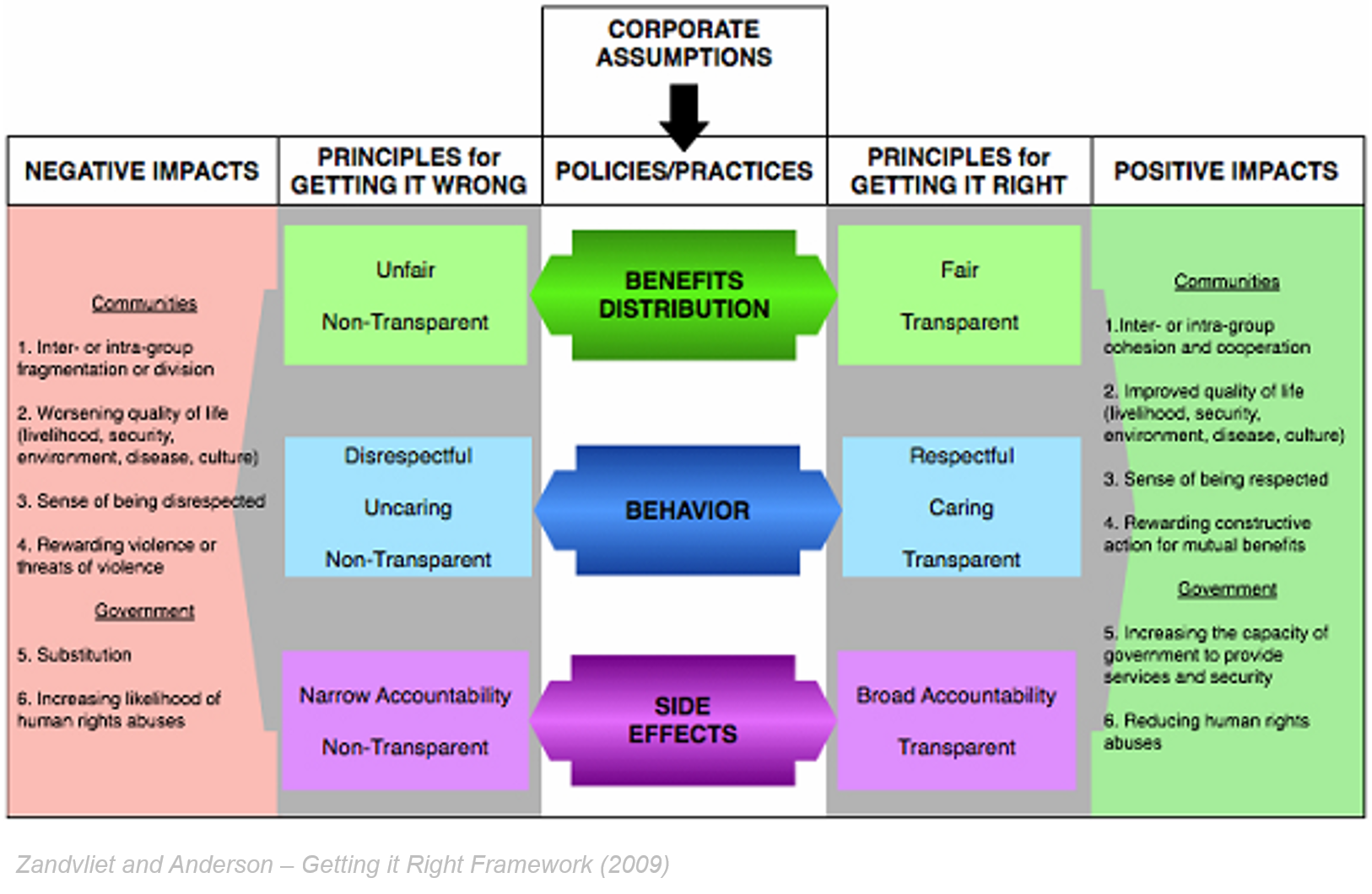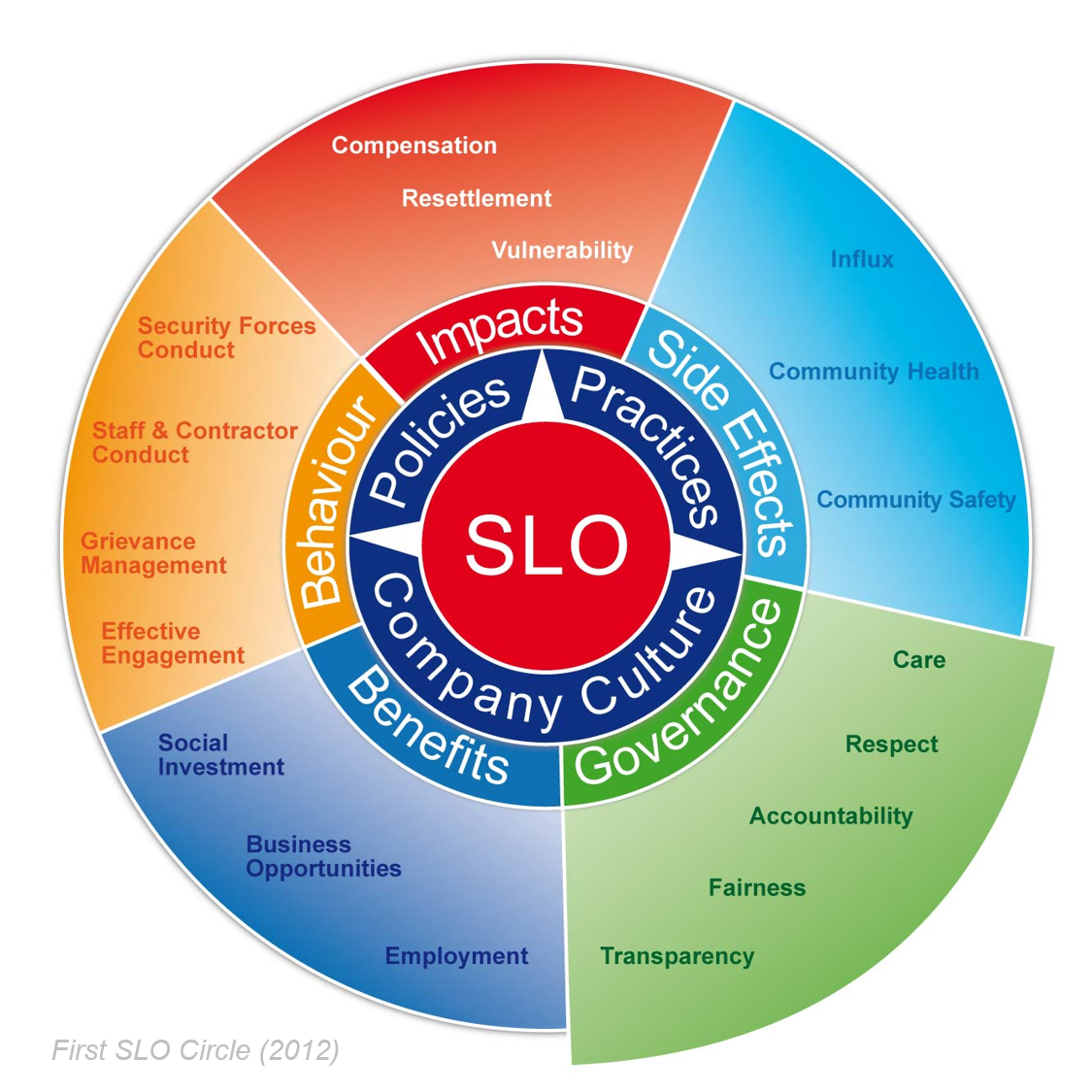Evolution of a management system
Management | 2 April 2024

Management systems supporting the pursuit of excellence and continuous improvement are found in all other aspects of businesses - technical, financial, administration and health and safety and environmental performance - so why not community relations and social performance? Why not indeed. As a community relations novice working away from home for the first time and needing all the help I could get, my experience was that a well-structured system does help. A lot. Seventeen years on, and a lot of grey hairs later, I am still a believer.
Newmont Five-Star was my first exposure to an integrated management system. It was risk and opportunity based, comprehensive, with strong controls and solid fundamentals. These included a commitment to Free Prior Informed Consent (FPIC) and the IFC guidelines for involuntary resettlement. There was a requirement for operations to have a social baseline and a strong focus on internal and external engagement. Requirements cut across business unit boundaries to address local and indigenous employment and business support. Periodic review and assesses performance requirements included arms-length third party review. All of this was overlain by strong and simple values and CEO commitment.

I have talked before about how my early days in Ghana also introduced me to Luc Zandvliet and a model for “getting it right”, a model that made a lot of sense at the time and, as anyone who casts more than a casual eye over the slo-support model “getting it right” continues to be the foundation of what I do.

The IFC performance standards is the third framework from those early formative years. Again, risk based and a useful guide, notwithstanding the somewhat formal language and generic requirements. We weren’t funded by IFC so we weren’t bound to comply, rather we could use as we thought appropriate and we weren’t subject to the rigours of the IFC’s compliance process. The IFC standards and the Equator Principles are increasingly becoming the de facto benchmark for lenders of project financing. I have to confess that it took me a while to realise the risk being managed is the risk to the lender and its reputation.

Since those early days I have been down a few rabbit holes. Rio Tinto’s CSP framework circa 2012 helped by linking management of community relations to a company philosophy and bringing organizational capabilities into the mix. Fast forward to 2020 and the destruction of the Juukan Gorge Caves shows how times change and maybe how systems fail.

My first attempt to re-imagine the “getting it right” framework didn't cut through:

Around the same time I needed to put together a coherent (and easy to visualise) management system approach to address the overlapping demands for short-term compliance with lender requirements and the long-term demands for social performance and social licence, with the latter requiring a system that provided:
- direction for work that community teams are mandated to do such as resettlement, consultation and community development;
- a mechanism for coordinating multi-function teams in areas like community health and safety, emergency response planning;
- a tool for checking communities team is “doing it right” with its own activities, particularly hiring staff and buying services locally; and
- a tool for checking that other parts of the company – supply chain managers, human resources and security are also “doing it right”
After toying with a few ideas I ended up using the Newmont Five-Star IMS as the starting point and linking it to both the SLO Circle and the IFC Performance Standards. It worked but again isn’t something I have persevered with.

Next was the Integrated Social Performance Framework (ISP) which made sense at the time but didn't quite do what I hoped – it is a bit clunky and was a bit hard for a novice or non-communities specialist to get their head around.

While not living up to the early promise the experience provided some valuable takeaways:
- Keep it very simple: New ideas that are easy to understand are adopted more quickly.
- Fit as closely as possible with existing culture, practices and systems: An idea that is radically different from “the company way” will not be adopted as easily as one that builds on points of similarity.
- Score some quick wins: The easier it is for a person to see the results of a new way of working, the more likely they are to adopt it.
Taking these on board for a review of engagement and community development activities, I simplified the approach, using the current SLO-toolkit guides as the starting point, incorporating as they do the “best of“ the various good practice guides and lessons learned in the field, in this case linking the company’s 5-pillar model to the UN Sustainable Development Goals:

The approach worked really well for this particular client for a number of reasons – the sponsor was very hands-on, the scope was less ambitious and focused on community relations and community development and the site teams were smaller. Equally important was keeping the “Social Performance Theory“ (the stuff that is very interesting to a social performance expert but of little interest to most of the people on the ground) in the background (lesson 1) and that the recommendations were easy to understand and very practical (lessons 2 and 3) and there was no reason to think that this same approach (tweaked again if necessary) couldn‘t work for others.
Follow-up work with the same client allowed me to test what is now the SLO-framework – grounded in the ‘getting it right’ model from 2009, simple, easy to explain, quickly understood by head office, site management and communities team – backed up with simple guidance to help get started.

Which is all very well but CAUTION NEEDED!!!
Clearly, I think systems are useful and have a part to play for any company trying to do a good job with their community relations and social performance. How important having a system is to people outside the company in local communities is less clear. Where there is structured and ongoing engagement with community stakeholders, community understanding of the processes may bring something of value to the relationship but at many levels having a system probably carries little weight.
A local farmer for example, is going to be less concerned that the company applies “Standard X” or “Procedure Y” when calculating the compensation to be paid for the 10 pineapple plants the drill rig has knocked over, or that there are 8 steps in the approval process for payment, involving 4 departments. Rather the farmer will judge the company on whether they are respectful and fair in their dealings with them and pay them the agreed sum at the agreed time.
So, for all the virtues of adopting a systematic approach it is important to never forget that any management system provides a framework, guidance and tools and is in place to support and assist companies and individuals to achieve excellent performance.
At the end of the day creating the environment for good community relationships to happen requires the convergence of the right approach, the right people and the right systems and clearly there is a place for a well-structured, systematic approach to managing community relationships. If the system is well designed and applied properly, by motivated and trained staff with the right attitude a good result will be a more likely outcome.
Post a Comment